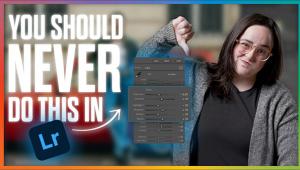Q&A For Digital Photography
To aid us in making Digital Help as helpful as possible, please be specific in your query and include components, including software, that you use. David says, “Make me guess the problem and I might guess wrong.”—Editor
A Dialog
There are a couple of serious errors in your article on the Mac mini (April, 2012, issue). You write that “no calculation is needed to edit an image with Photoshop.” Obviously some calculations are needed, otherwise nothing would get done. It is true that the processor speed is largely irrelevant, but the amount of RAM is not. Your apparent distinction between calculation and computation is puzzling and unique.
Also, the entire image might not be put in RAM memory. Were the image too large, some of it would be put in virtual memory on disk. As the number of layers expands, this becomes more likely. Thus, an extremely large photo will take much longer to edit because there will be some swapping between memory on disk and RAM; the pixels must be in RAM to be modified. The above are true for Mac, Windows, and Linux.
James Ullrich
Emeritus Professor of Computer Science
The University of Montana
I am sorry but my statement stands as is, because with few exceptions it is entirely true. Changes made using Photoshop editing tools, like reducing brightness, increasing saturation, and changing image size, involve preset algorithms built into the software, not computation (that has been done for the user and is included in the application). The exceptions in image editing are rare, like a few filters such as Gaussian Blur. However, the image organization functions like Bridge and what is built into Lightroom and other Raw image arrangement utilities are databases and do involve computation. And in the latest versions of Photoshop some of the facilities that involve copy/paste manipulations with a single brush also involve some computation. But these are minor or ancillary functions.
With most computers today with 4GB or more of RAM it is rare that an image has to be put into virtual HD memory, unless very many layers are opened.
It is easy to see this difference between image editing and other kinds of computing like using a business application, particularly if you have an Apple Mac; as it has an on-screen Activity Monitor app that has processor activity readout. You can actually see that when Photoshop image-editing tools are used there is almost no CPU activity, compared to most other computer functions like calculating a spreadsheet.
Reply from Professor Ullrich:
Sorry but we still disagree…perhaps it is semantics. I would say running a preset algorithm is computation. And, as you indicate, the brightness is far less computationally intensive than Gaussian Blur.
I do read and enjoy your column in Shutterbug—and almost purchased a Mac mini.
Response from David Brooks:
Yes, possibly semantics. But what I said means that the computation in the form of an algorithm (a complex, already computed formula) is already done in the software. The algorithm simply conveys the changes in xy-rgb number values directly from the application to the image stored in RAM.
It goes through the I/O chip, not by and through the CPU processor.
Obsolete, Or Not?
Q. Thanks for the articles and tips regarding the Mac mini and various monitors. I’m in that unhappy position of needing to purchase a new computer setup as I’m being forced by the elimination of support and updates of the Mac PowerPC to join the Intel world if I’m to “keep up.” My G5 tower has loads of RAM and bays of terabyte hard drives but is being relegated to the scrap pile by progress and marketing ploys! Oh well!
My main interest is my use of Photoshop, Lightroom, and Aperture. I enjoy creating digital slide shows with my Nikon D300S as my instrument of choice. This will be my last computer purchase so I don’t want to make a mistake. I’ve been an Apple guy for years…not smart enough to use a PC!
That said, what is your opinion of purchasing a Mac mini dual-core i7 and adding my own Crucial Solid State and Crucial 16GB RAM, an NEC P241W-BK 24” widescreen monitor as well as a LaCie 2TB Thunderbolt storage.
The SSD would be the startup drive for quick getaways from the line. Apparently I shouldn’t delete Lion and replace with Snow Leopard as that will possibly create its own problems.
I appreciate your comments and value your suggestions.
Lee Stallings
via e-mail
A. I am empathic toward your situation, as in some respects it has paralleled the challenges I have dealt with. And I am sympathetic to your perspective of the presumed evolution of new products, but of course cannot fault Apple’s obvious success. But if like me you have practiced a workflow you have refined over years of use, losing the capacity to continue in the same ways is sorely irritating.
One of the things I looked into was to see if I could continue access to and use of PowerPC applications and whether a new Mac mini would run with Snow Leopard as the OS. The answer is theoretically yes, but to downgrade you have to have an OS X 10.6.3 installation disc. And from what I have read in the Apple user forums is that it needs a very competent technician to make it work. But the current Mac mini will run on OS Snow Leopard beginning with Version 10.6.3, and then can be upgraded to the current 10.6.8 level.
But, I have not converted my Mac mini backward from OS X 10.7 for two reasons: I have a Mac Pro with quad Intel processors, and I can do all my work with it, plus I live kinda in the boonies and good Apple technical support is a long way off for someone who does not travel.
However, running either Photoshop CS4 (which I prefer) or CS5 on the Mac mini in OS X 10.7 is no problem—the machine handles the job very efficiently. The same goes for Aperture and Lightroom, although they are not part of my usual workflow. Although I do not use one of the NEC displays myself others have reported they function well with the new Mac mini, and I have used all brands/models of pro-graphics LCD displays with good performance installed on the new Mac mini. My avoidance of NEC is entirely due to the display requirement to use SpectraView software, which does not work with other brands/models of displays.
I was lucky, as a friend and colleague had an extra Intel Mac Pro so I was able to afford it. From what I can gather, good refurbished Intel Mac Pros are in high demand and short supply. And sadly, buying a new one puts you in the same bind as a new Mac mini, it has OS X 10.7 and PowerPC applications will not run on it.
ANNOUNCEMENT
I am pleased to announce the latest 4.3 Edition to my eBook Digital Darkroom Resource CD. The CD now contains 33 chapters totaling 399 pages in Adobe Acrobat .PDF format, providing easy-to-read text and large high-quality illustration. The CD is available for $20 plus $5 shipping and handling (US Mail if available). Ordering is as simple as sending a check or money order for $25 made out to me, David B. Brooks, and mailed to PO Box 2830, Lompoc, CA 93438.
- Log in or register to post comments


































